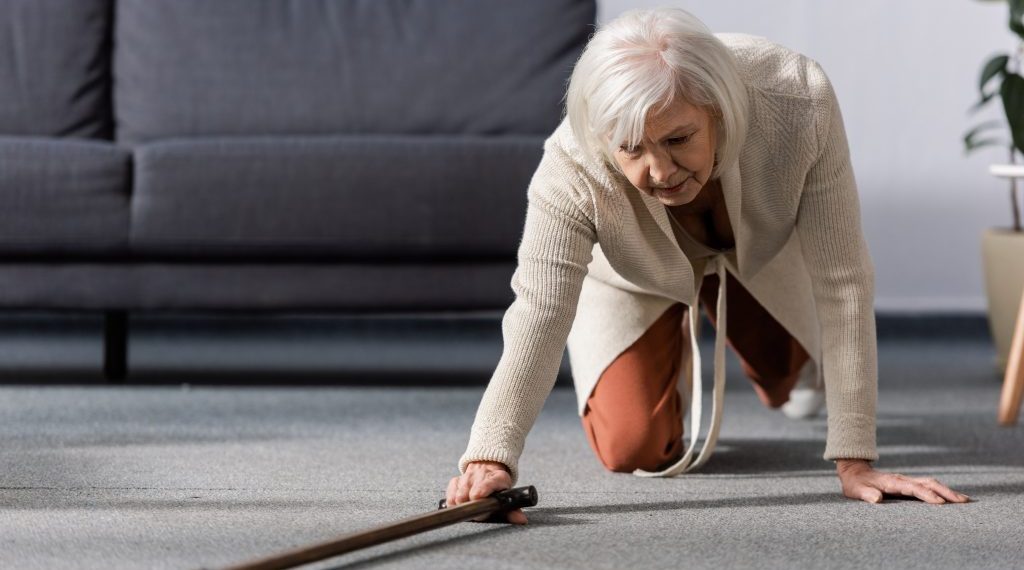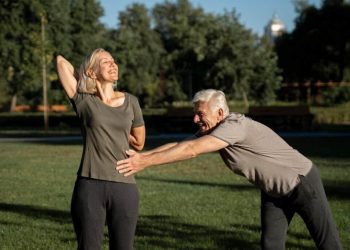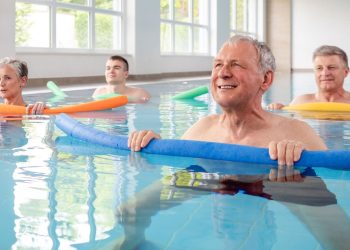Falls represent one of the most significant health threats facing older adults today. Each year, millions of people experience falls that lead to injuries, reduced independence, and diminished quality of life. Yet the encouraging truth is that falls are largely preventable through targeted exercise programs that address the underlying physical factors contributing to fall risk. By incorporating specific balance, strength, and flexibility exercises into your routine, you can significantly reduce your chances of experiencing a fall and maintain your independence well into your later years.
Understanding the Connection Between Exercise and Fall Prevention
Falls rarely occur due to a single cause. Instead, they result from a complex interplay of factors including decreased muscle strength, impaired balance, reduced flexibility, and slower reaction times—all changes that naturally occur with aging but can be substantially mitigated through regular exercise. Research consistently demonstrates that structured exercise programs can reduce fall risk by up to 30-40%, making physical activity one of the most effective preventive measures available.
The key lies in addressing multiple physical systems simultaneously. Balance exercises train your body’s ability to maintain stability in various positions and during movement. Strength training builds the muscular power needed to catch yourself if you begin to fall and to rise safely from a chair or bed. Flexibility work ensures your joints move through their full range of motion, allowing you to step over obstacles and navigate your environment safely.
Essential Balance Exercises
Balance training forms the cornerstone of any fall prevention program. These exercises challenge your body’s equilibrium systems and teach your muscles to respond quickly to shifts in your center of gravity.
Single-Leg Stance
Begin with the simplest yet most effective balance exercise: standing on one leg. Start by standing near a wall or sturdy counter for support. Lift one foot slightly off the ground, holding the position for 10 seconds initially, then gradually work up to 30 seconds or more. Repeat on the other leg. As you improve, challenge yourself by closing your eyes briefly or standing on a softer surface like a folded towel or balance pad.
Heel-to-Toe Walk
This exercise mimics tightrope walking and significantly improves dynamic balance—the kind you use when moving. Position your feet so the heel of one foot touches the toes of the other, then walk forward in a straight line for 20 steps. Extend your arms to the sides for balance if needed, and perform this near a wall initially for safety. This exercise is particularly valuable because it simulates the narrow base of support required when navigating crowded spaces or tight hallways.
Standing Marches
While holding onto a stable surface, lift one knee up toward your chest, hold for 2-3 seconds, then lower it slowly and repeat with the other leg. Perform 10-15 repetitions on each side. As your balance improves, reduce your reliance on hand support or try lifting your knee higher. This exercise builds both balance and the hip strength necessary for stair climbing and stepping over obstacles.
Clock Reaches
Imagine you’re standing in the center of a clock face. While balancing on one leg, reach your free leg out to point at 12 o’clock (straight ahead), then return to center. Next, reach toward 3 o’clock (to the side), then 6 o’clock (behind you), and finally 9 o’clock (to the other side). Perform 5 complete “clocks” on each leg. This multidirectional exercise prepares your body for the varied challenges of real-world movement.
Strength Training for Fall Prevention
Adequate lower body and core strength is critical for preventing falls. Strong muscles provide the power needed to recover from stumbles and maintain stability on uneven surfaces.
Chair Stands
This foundational exercise builds the leg strength essential for daily activities. Sit in a sturdy chair with your feet flat on the floor, hip-width apart. Without using your hands, stand up fully, then sit back down with control. Start with 5-10 repetitions and gradually increase to 15-20. If this is too challenging initially, use your hands lightly on the armrests for assistance, progressively reducing support as you grow stronger. This exercise directly translates to improved ability to rise from chairs, beds, and toilets safely.
Wall Push-Ups
Upper body strength helps you catch yourself during a fall or push yourself up after a fall. Stand arm’s length from a wall, place your palms flat against it at shoulder height and width. Bend your elbows to bring your chest toward the wall, then push back to starting position. Perform 10-15 repetitions. This exercise also strengthens the muscles that maintain upright posture.
Calf Raises
Stand behind a chair, holding it lightly for balance. Rise up onto your toes, hold for 2-3 seconds, then lower slowly. Perform 10-15 repetitions. Strong calf muscles are essential for walking stability and for navigating stairs and curbs safely. As you progress, try performing calf raises on one leg at a time for an additional challenge.
Side Leg Raises
Standing behind a chair for support, lift one leg straight out to the side, keeping your back straight and toes pointing forward. Hold for 2-3 seconds, then lower slowly. Perform 10-15 repetitions on each side. This exercise strengthens the hip abductor muscles that are crucial for lateral stability and preventing sideways falls.
Knee Extensions
Sit in a chair with your back supported. Straighten one leg out in front of you, hold for 3-5 seconds while flexing your foot, then lower slowly. Perform 10-15 repetitions on each leg. This exercise targets the quadriceps muscles that control knee stability during walking and when navigating stairs.
Flexibility and Mobility Work
Flexibility often receives less attention in fall prevention discussions, but maintaining good range of motion in your joints and muscles is essential for safe movement and avoiding obstacles.
Ankle Circles
Sit in a chair and lift one foot slightly off the ground. Rotate your ankle in slow, complete circles—10 clockwise, then 10 counterclockwise. Repeat with the other ankle. Flexible ankles allow you to adapt to uneven surfaces and recover from missteps more effectively.
Seated Hamstring Stretch
Sit on the edge of a chair with one leg extended straight in front of you, heel on the ground. Keep your back straight and lean forward gently from your hips until you feel a stretch along the back of your extended leg. Hold for 20-30 seconds, then switch legs. Tight hamstrings can alter your walking pattern and increase fall risk.
Standing Calf Stretch
Stand facing a wall with your hands against it for support. Step one foot back, keeping both heels on the ground and your back leg straight. Lean forward until you feel a stretch in the calf of your back leg. Hold for 20-30 seconds, then switch legs. This stretch is particularly important for maintaining proper ankle mobility during walking.
Practical Implementation: Building Your Fall Prevention Routine
Understanding which exercises to perform is only half the equation—implementing them consistently and safely is equally important. Here are practical strategies for success:
Start Gradually and Progress Sensibly
If you’re new to exercise or returning after a period of inactivity, begin conservatively. Perform exercises 2-3 times per week initially, allowing rest days between sessions for recovery. Start with 5 repetitions of each exercise and gradually increase to 10-15 as your strength and endurance improve. Quality of movement always trumps quantity—performing 5 repetitions with good form is far superior to 15 repetitions with poor form.
Create a Consistent Schedule
Exercise works best when it becomes habitual. Choose specific days and times for your fall prevention routine, treating these appointments as seriously as any medical visit. Many people find success exercising in the morning when energy levels are highest, but the best time is whatever allows you to be most consistent.
Ensure a Safe Exercise Environment
Always exercise in a clear, well-lit space with stable support nearby. Remove tripping hazards like loose rugs, wear supportive non-slip shoes, and keep a phone accessible in case of emergency. Initially, perform exercises near a sturdy counter or heavy chair that won’t move if you need to grab it for balance.
Track Your Progress
Keep a simple exercise log noting which exercises you performed, how many repetitions, and how long you held balance positions. Watching your capabilities improve over weeks and months provides powerful motivation and helps you identify when you’re ready to increase difficulty.
Combine Exercise Types
An effective fall prevention routine should include elements of balance, strength, and flexibility in each session. A sample 30-minute routine might include: 5 minutes of warm-up with marching in place and arm swings, 10 minutes of balance exercises, 10 minutes of strength training, and 5 minutes of flexibility work.
Consider Group Classes
Many community centers, senior centers, and hospitals offer evidence-based fall prevention programs like Otago Exercise Programme or Tai Chi for Fall Prevention. These classes provide professional instruction, social connection, and built-in accountability—all factors that improve exercise adherence.
When to Seek Professional Guidance
While many people can safely begin a basic fall prevention exercise program independently, certain circumstances warrant professional guidance. Consult with a physical therapist or physician before starting if you’ve experienced multiple falls, have severe balance problems, experience dizziness, have been recently hospitalized, or manage multiple chronic health conditions. Physical therapists can assess your specific risk factors and design a personalized program addressing your unique needs.
The Long-Term Commitment
Fall prevention through exercise isn’t a short-term project but rather a lifelong commitment to maintaining your physical capabilities. The benefits extend far beyond fall prevention to include improved mood, better sleep, enhanced cognitive function, and greater independence in daily activities. Most people notice improvements in balance and strength within 4-6 weeks of consistent exercise, with continued gains for several months.
Remember that fall prevention is multifaceted—exercise should be combined with environmental modifications to your home, regular vision and medication reviews, appropriate footwear, and addressing any underlying medical conditions affecting balance. Together, these strategies create a comprehensive approach to maintaining your safety and independence.
By dedicating just 30 minutes, three times per week to targeted fall prevention exercises, you invest in your future mobility, independence, and quality of life. The effort required is modest compared to the devastating consequences of serious falls. Start today with even one or two exercises, and gradually build a complete program that protects your health and preserves your ability to live life on your terms.
- what is tai chi walking for fall prevention
- balance for fall prevention
- tai chi for preventing falls
- balance exercises to prevent falls
- gentle fall prevention for elderly
- senior fitness for fall prevention
- mobility to prevent falls
- coordination for fall prevention
- active aging fall prevention
- posture for fall prevention






